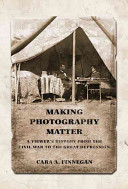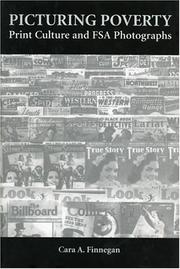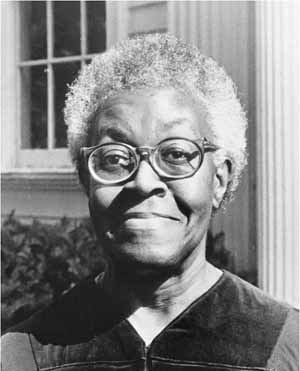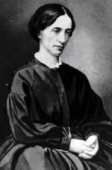
Cara A. Finnegan
Born: in
Pen Name: None Connection to Illinois: Finnegan earned her Ph. D. from Northwestern University in 1999 and has been a member of the faculty of the University of Illinois at Urbana-Champaign since then. Biography: Cara A. Finnegan is a Professor in the Departments of Speech Communication and Art History at the University of Illinois at Urbana-Champaign. Her research explores the social, political, and historical role of visual communication in the American public sphere. Her essays on visual rhetoric have appeared in journals such as The Quarterly Journal of Speech, Rhetoric & Public Affairs, and Rhetoric Society Quarterly. She edited the book ''Visual Rhetoric: A Reader in Communication and American Culture'' with Lester C. Olson and Lester C. Olson.She is a former recipient of the National Communication Association's Diamond Anniversary Book Award and the Golden Monograph Award.
Awards:
- ''''Making Photography Matter
Website: http://www.carafinnegan.com/
Cara A. Finnegan on WorldCat : http://www.worldcat.org/search?q=Cara+Finnegan
Selected Titles
 |
Making photography matter : ISBN: 9780252039263 OCLC: 907774525 Photography became a dominant medium in cultural life starting in the late nineteenth century. As it happened, viewers increasingly used their reations to photographs to comment on and debate public issues as vital as war, national identity, and citizenship--Jacket. |
 |
Picturing poverty : ISBN: 1588341186 OCLC: 50028662 Smithsonian Institution Press, Washington, D.C. : ©2003. Working for the government's Farm Security Administration in the 1930s, photographers set out across the country to capture the human face of the Depression. Walker Evans' portraits of sharecroppers and Dorothea Lange's images of migrant families today stand as the most popular images from the FSA's project. Yet, in their own time, the pictures functioned as urgent, powerful reminders that one-third of the nation was in a real crisis. Focusing on these and other well-known FSA photographs, Finnegan examines how popular magazines constructed complex and often contradictory messages about poverty. Picturing Poverty also explores a moment in American history when visual images took center stage as the nation struggled with economic, political, and social strife. By striving to understand the original context of the photographs, Finnegan shines new light on the meanings of poverty, the Depression, and the various roles of the media. At once a persuasive analysis of FSA images and a balanced commentary on the role of the media, Picturing Poverty is above all a look into the difficult issue of how the mass media presents social issues to Americans. |




.jpg)